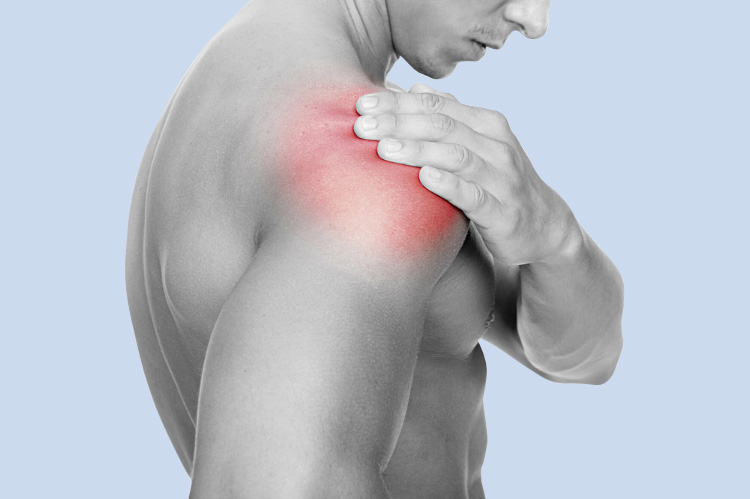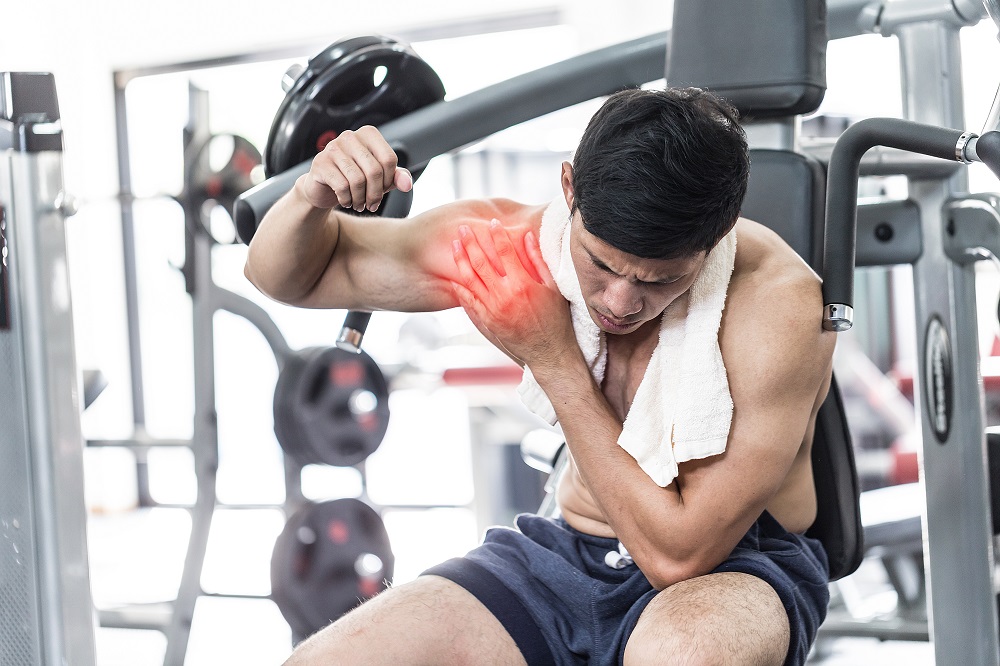So you’ve been training at the gym for a while now and the numbers on your lifts have been steadily increasing, however you’ve been noticing for last 4-6 weeks that the slight niggle at the front of your shoulder is starting to bother you more and more. Not just while you are training, but sometimes when you try to put your jacket on or when you roll over your shoulder in bed. Alternatively, you may not go to the gym at all. You did that one thing on the weekend – carrying groceries, lifting a heavy couch up the stairs – and that ache just isn’t going away. So what could it be?

Tendinopathies
Tendon pathologies are very common and are probably one the most frequent things we see in the clinic. Tendons are the fibrous tissues that connect muscle to the bone and function to transmit force that facilitates movement around a joint and also absorbs force to limit muscle damage or produce torque. They are composed primarily of water and collagen and their mechanical properties vary depending on the type of stress which is applied to them.
Tendon pathologies are thought to occur on a continuum where tendons undergo three distinct phases:
- Reactive tendinopathy: an acute reversible process, brought about by an increase in mechanical loading
- Tendon Disrepair: if loading continues to exceed the tendon’s capacity to regenerate for a prolonged period of time, the tendon matrix begins to breakdown and growth of neural and vascular begin to pervade the tendon space
- Degenerative tendinopathy: further collagen breakdown, advanced matrix breakdown and increased fibre thickness. Once the tendon has reached this state there is very limited ability for the tendon to repair itself.
This process is often brought on by increased volume of work on the tendon, be it one supra maximal load or continuous insults to the tendon which are below its threshold but accumulate over a short period of time leading to the reactive tendinopathy. The biceps tendon, particularly the long head of biceps (LHB) has been shown to function as a humeral head depressor/stabiliser of the shoulder joint and research shows that if the rotator cuff loses its integrity (via a tear or strain) the activity of the LHB increases, and superior migration of the humerus may concomitantly occur. This further stresses the soft tissue and the compressive force on the tendon increases. This can be particularly evident when we put the arm in extension (e.g. hand behind the back) or with the arm in abducted and externally rotated positions (high five position).
Furthermore, biceps tendinopathy is rarely seen in isolation but commonly exists with other shoulder pathologies such as rotator cuff tears/strains, SLAP lesions and instability.
Biceps Tendinopathy Treatment
If you think you have a biceps tendinopathy, the most important factor in determining the course of treatment is finding the cause. The cause may be increased load, incorrect loading, faulty mechanics at the shoulder or all of the above
Altering external stress to below provocative loads is an important first step. Correcting scapular kinematics which may be contributing to the faulty load is also important for preventing future recurrence of the tendon pathology. For example, if there is increased anterior tilt of the scapula there is a decrease in the subacromial space which may impinge an already irritated tendon, propagating the tendon disrepair process.
Tendon loading is then introduced to induce favourable physiological change in the tendon. Whilst studies show that the area of disrepair may not heal, there is enough redundancy within the tendon that we are able to strengthen the rest of the tendon to improve its ability to cope with stress and the resiliency of the tendon moving forward. Because of the relatively poor blood supply of tendons, they can and do take a while to respond to the rehab process so be persistent with the process. Morphological changes within the tendon will take longer than 8-12 weeks and research shows that positive changes can still be occurring in a tendon up to 2 years after a tendon rehab program. This means that to prevent recurrence or re-injury it is imperative to that your rehabilitation process continues at least for 3 months post injury.
If you think you are experiencing biceps tendinopathy it is imperative you seek assessment and treatment no matter where your pathology lies in the continuum. Stopping the degenerative process as soon as possible will help to reduce the risk of the tendon reaching the final stage of disrepair and it becoming a chronic problem.
If you have any questions or would like to book in to see one of our physiotherapists, please do not hesitate to contact Get Active Physiotherapy on 1300 8 9 10 11 or email us at admin@getactivephysio.com.au




